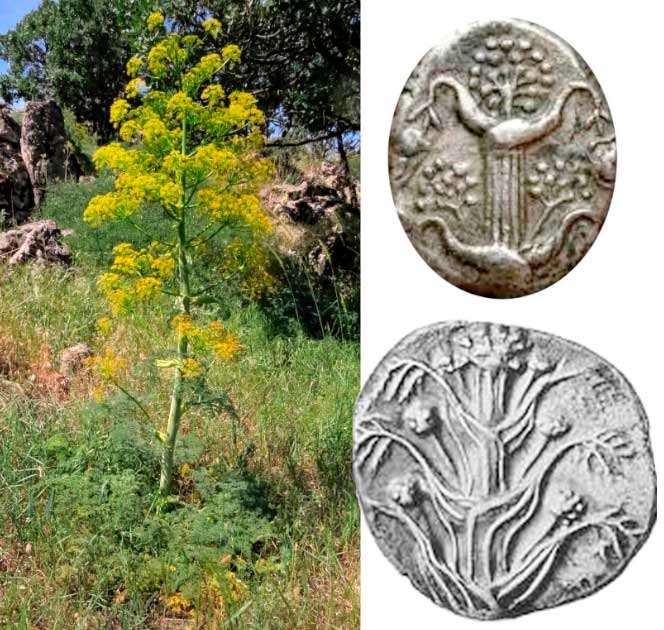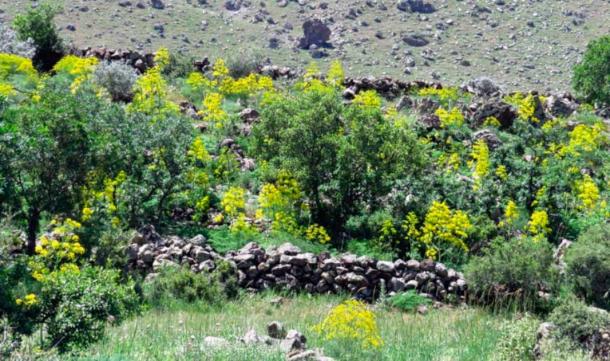
Ancient Aphrodisiacal and ‘Cure-All’ Plant Rediscovered!
Pliny the Elder claimed Emperor Nero consumed the last stalk of silphion, which was believed to have gone extinct almost 2000 years ago. But now, a Turkish professor claims to have identified the ancient aphrodisiac and cure-all.
One of the most valued and highly sought-after plants in the ancient Mediterranean was silphion ( Ferula drudeana.) Also known as laserwort and silphium, ancient Egyptians, Greeks, and Romans produced a medicinal gum-resin from this golden-flowering plant which they used not only in medicines, but also in foods and perfume. And while it was widely used as a powerful aphrodisiac it also had contraceptive qualities.
Silphion grew in the Cyrene region of Libya about 2500 years ago and in his 1st century AD book, Natural History, Roman chronicler Pliny the Elder described the leaves of silphion as “maspetum,” and he said it “bore considerable resemblance to parsley”. In this work, Pliny said the Emperor Nero consumed the last stalk of silphion, but now, Professor Mahmut Miski, a researcher of plant medicines at Istanbul University in Turkey claims to have discovered flowering Ferula drudeana near Mount Hasan in central Turkey.

Comparison of Ferula drudeana plants with representations of silphion. (CC BY 4.0)
Ancient Silphion as an Aphrodisiac and for Sexual Dysfunction
A 2017 BBC article said to list this plant’s uses would be “an endless task.” In ancient times its stalks were crushed and roasted, sauteed, and boiled and the roots were dipped in vinegar and eaten fresh, and when the stalks were fed to sheep “their flesh became delectably tender.”
- Silphium, the ancient contraceptive herb driven to extinction
- Sacred Plant of Eternal Love and Healing: The Mythology and Magic of Basil
A 2020 paper examining the aphrodisiacal properties of F. drudeana roots concluded that experimental evidence showed the plant extract “enhanced the sexual behavior of male rats.” And so powerful was the plant derivative at stimulating sexual drives that this team of scientists said their results “supported the traditional claims about the use of Ferula species for male sexual dysfunction.”
According to a National Geographic article about the recent identification of the lost plant, besides its application for boosting bedroom activities, ancient Greek physicians also used silphion to relieve stomach pain and for the removal of warts. Furthermore, in Roman times, the plant was used to spice foods, from the day to day “pot of lentils or finishing an extravagant dish of scalded flamingo”.
The First Extinct Life Form on Record
Emperor Julius Caesar famously amassed a thousand pounds of the plant which was part of Rome’s imperial treasuries. And the National Geographic article says “silphion saplings were valued at the same price as silver”. After the plant vanished from history, all the way until the Middle Ages, explorers sought after the valuable commodity. However, on every expedition the questors returned empty handed and the disappearance of silphion has until now represented the first extinction of any plant or animal species on record.
- The Aphrodisiacs that Spiced Up Sex Lives in the Ancient World
- Ancient Methods of Contraception – Even Tutankhamun Wore Protection
In 1983 professor Mahmut Miski was walking in the foothills of Mount Hasan, an active volcano in the Cappadocia region of central Turkey, when he found Ferula drudeana. But two decades would pass before he realized it might have been ancient silphion. Last October, after heavy snow melted at the site in central Turkey, Prof. Mahmut Miski returned to the foothills and discovered a rich bloom of the plant.

General view of the Ferula drudeana population in a stone-walled garden. (CC BY 4.0)
What Else is Lost But Not Gone?
The mountains, river banks and coastlines of the ancient Mediterranean region were awash with tens of thousands of species of colorful, and often sensational plants that were utilized for foods, medicines, and perfumes. However, only in 2017 the BBC said, “We may never learn the true identity of silphium.”
If the claims of Professor Mahmut Miski are correct then the ancient plant believed to be extinct is still with us, and only its identity had been lost over the last 2000 years. Only time will tell if the professor’s assertions are accepted by the botanical community, but if they are, the interesting question emerges as to what other species of plants believed to be extinct are still with us, and just not identified yet.
Top Image: Comparison of Ferula drudeana plants with representations of silphion. Source: CC BY 4.0
By Ashley Cowie
















Comments
No herb, drug or pill will fix your old fading body. Jesus knew the way, but they killed and ate him.
Nobody gets paid to tell the truth.